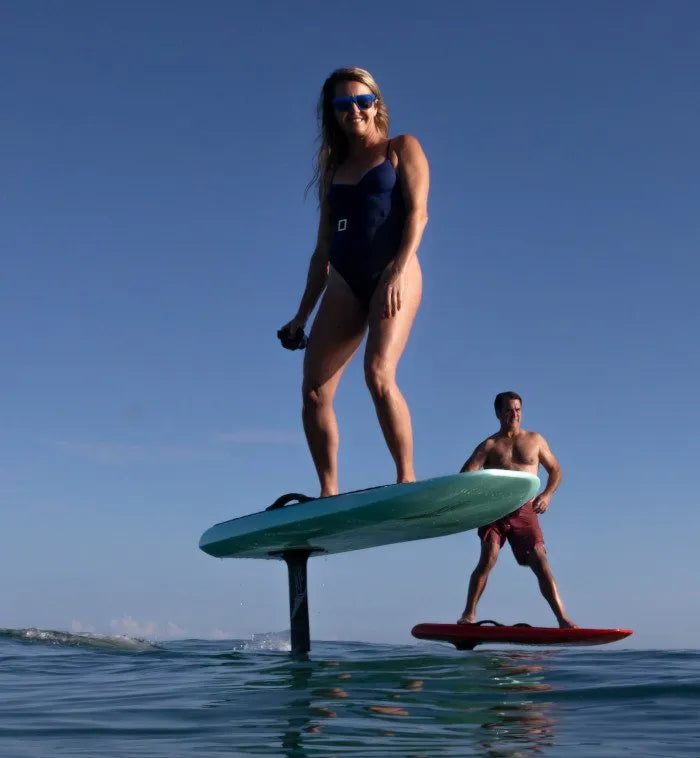Electric hydrofoil boards, commonly known as eFoils, combine the exhilaration of surfing, kiteboarding, and wakeboarding with the cutting-edge advancements of electric propulsion. These innovative boards lift riders above the water for a smooth and nearly silent ride. But what truly sets eFoils apart, and how fast can they propel water sports enthusiasts across the surface?
Understanding eFoils:
An eFoil is essentially a surfboard equipped with an electric motor and a hydrofoil, which is a wing-like structure mounted underneath the board. As the board gains speed, the hydrofoil lifts it above the water's surface, minimizing drag and creating a sensation of flying. Riders control their speed using a handheld wireless remote, which communicates with the board's motor, providing a dynamic and responsive experience.
How Fast Do eFoils Go?
The speed of an eFoil can vary, but typically, these boards can reach speeds between 20 to 30 miles per hour (32 to 48 km/h). Several factors influence the maximum speed, including motor power, foil wing design, board size, and the rider's weight and skill level.
Factors Influencing eFoil Speed:
-
Motor and Propulsion: The heart of an eFoil's speed lies in its motor. The power of the motor, combined with the efficiency of the propeller and gearbox, determines how much thrust the board can generate. Efficient hydrodynamic designs help in reducing water resistance, allowing for smoother and faster rides.
-
Foil Wing Design: The hydrofoil wing plays a critical role in the board's performance. Larger wings provide more lift at slower speeds, making them ideal for beginners for stability. Conversely, smaller wings are streamlined for speed and agility, favored by experienced riders looking for a faster, more exhilarating ride.
-
Board Dimensions: The size of the board affects its stability and speed. Larger boards tend to offer more stability, which is great for beginners. Smaller boards, while less stable, allow for higher speeds and are typically preferred by advanced riders for their agility.
-
Rider Weight and Conditions: Lighter riders will generally find it easier to reach higher speeds due to less lift needed to get the board airborne. Additionally, calm and flat water conditions are ideal for reaching top speeds, while choppy waters or strong winds may reduce performance and speed.
Optimizing Your Ride:
When choosing an eFoil, it’s important to consider the type of riding you want to do. Beginners should look for features that offer greater stability and ease of use, such as larger boards and wings. Advanced riders may opt for configurations that allow for greater speed and maneuverability.
Safety First:
Riding an eFoil requires attention to safety. Always wear a helmet and a personal flotation device. It’s also crucial to ride in areas free of obstacles, away from swimmers, and out of busy boat traffic lanes. Beginners should start in calm waters and gradually build their skills before attempting higher speeds or more challenging conditions.
In conclusion, eFoils offer a unique and thrilling way to engage with water sports, providing riders with the opportunity to glide above the water at impressive speeds. Whether you’re a novice seeking a new kind of water adventure or an experienced rider looking to push your limits, eFoiling offers a versatile and exciting experience. As this sport continues to evolve, it promises to bring even more innovations and enjoyment to enthusiasts around the world
Ready to experience the magic of eFoiling? Check out our selection of eFoils and find the perfect match for your adventure style. Visit our learning center for tips on getting started, or sign up for a beginner course to master the basics and safely take to the waters.
